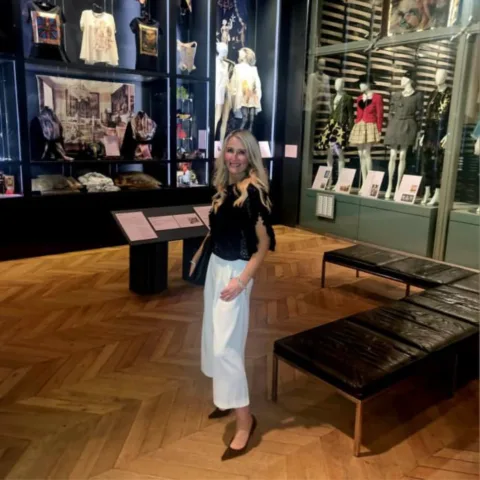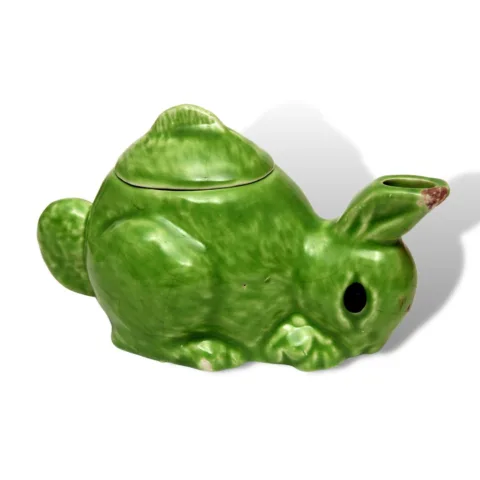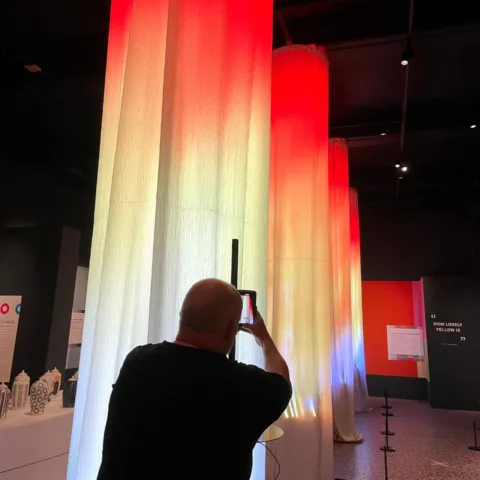The Bowes Museum Blog

Michael Eden: Wedgwood and Wouldn’t
Having been invited to exhibit my work at The Bowes Museum, I was excited but somewhat daunted by the thought of engaging with the huge collection of ceramics. Though my work is now 3D printed, I made ceramics for over 25 years, and often base my work on historic pots that have interesting stories. I am fascinated not only by their form and decoration, but by how they were made and the times in which they were made.

Michael Eden
Josiah Wedgwood has been an inspiration as he was at the forefront of developing new materials and manufacturing techniques to produce highly desirable ceramics in the fashionable Neo-Classical style of the late 18th century. He was also an active member of the Lunar Society, a group of radical industrialists, scientists and social reformers who regularly met at the home of Matthew Boulton in Birmingham. They were leaders of the Industrial Revolution, a time of enormous social changes.
It could be said that we are in a similar age, where digital technology is having an enormous impact on our lives. In fact, 3D printing has been called the new Industrial Revolution, as its adoption is beginning to have far reaching effects on the way things are made. Its use in medicine and aerospace are already very impressive.
In preparation for the exhibition I made 2 research trips to the Museum and on the first, discovered 3 superb black basalt Wedgwood vases in the Director’s Office. I had previously seen nothing on this scale and immediately knew that they would make great starting points for reinterpretation.

Three Wedgwood Basalt Vases
They are part of a group commissioned in about 1920 by the Mond family to fill the niches in the Georgian gallery at Winnington Hall, Cheshire, then the headquarters of the chemical manufacturers, Brunner Mond Ltd., which later merged with 3 other companies to become ICI.
Wedgwood’s designs were inspired by Classical Greek ceramics and sculpture, so I continued my research by studying the decoration of Greek pots in the British Museum. I noticed that not all scenes depicted gods, goddesses and battles and that domestic scenes from daily life are illustrated, for instance a shoemaker in his workshop, or performing musicians and dancers.
I wanted my redesign of the Wedgwood vases to bring them firmly into the 21st century, so I replaced the classical scenes with images taken from popular culture and chose the Strictly Come Dancing and X Factor television programmes.

Vases by Michael Eden
The Wannabe Wedgwoodn’t Vase features rapper Honey G, who achieved celebrity status through her success on X Factor, the television series that auditions aspiring singers. Other parts of the vase’s surface decoration make a link between the original Wedgwood vase and the programme’s stage set and logo.
Strictly Come Dancing is an immensely popular television series that appeals to a wide range of viewers. The Strictly Wedgwoodn’t Vase forms a bridge between the ancient Greek vases, the original Wedgwood vase and the entertainment enjoyed by millions of viewers each week. The vase features 2016 contestants Katie Derham and her partner Anton du Beke with details of the stage set, interspersed between decorative elements developed from the Wedgwood Vase.
The other pieces that I have specifically created for the exhibition are 2 versions of the Romanesco vase, named after the cauliflower. On a visit to The Bowes Museum many years, I remember seeing a large collection of ceramics that imitated, fruit, nuts and food. Wanting to create another link to Josiah Wedgwood, I decided to base this design on his cauliflower teapots. I have been attracted to these early Wedgwood pots, and chose to use them as the starting point for a vase that connects art and mathematics.

Cauliflower Ware Teapot Taken at the Wedgwood Museum
The florets of the cauliflower are arranged in a spiral formation which can be seen here in this beautiful Romanesco cauliflower.

Romanesco Cauliflower
Like sunflowers and pine cones, the pattern created by the florets conforms to the Fibonacci sequence and the Golden Spiral, a simple mathematical system that controls how most things grow in nature.
The other interesting mathematical connection is the fractal structure of the cauliflower florets, a fractal being “a never-ending pattern. Fractals are infinitely complex patterns that are self-similar across different scales.”[1]
My Romanesco Vases also incorporate leaves created using photogrammetry, a system where a number of photographs, taken from different angles are stitched together to create a 3D photograph which can be imported into the CAD software. Once trimmed and edited, they can be connected to the other parts of the design.
The vases were created using Rhino 3D CAD [computer aided design] software, slowly building up the individual sections. Once satisfied with the design, the virtual renderings are made real using the latest Selective Laser Sintering technology, a very sophisticated type of 3D printing.
The use of these new tools allows me to create objects that were previously impossible to make and allows me to inhabit an arena somewhere between art, craft, design and technology.
By Michael Eden, artist
[1] https://fractalfoundation.org/resources/what-are-fractals/







